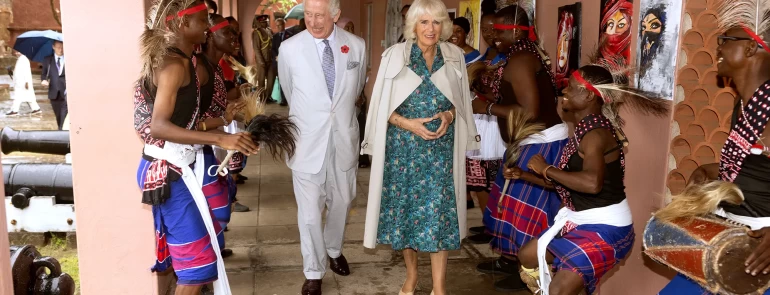King Charles III and Queen Camilla have concluded their four-day state visit to Kenya, the first Commonwealth nation they visited since His Majesty ascended to the throne. The visit was aimed at celebrating the warm ties between the two countries and strengthening their partnership in various fields, such as trade, climate change, youth empowerment and security. However, the visit also brought to the fore the painful legacy of colonialism and the need for reconciliation and justice.

The King and Queen arrived in Nairobi on October 31, where they were received by President William Ruto and First Lady Rachel Ruto at State House. They then proceeded to Uhuru Gardens National Monument and Museum, where they laid a wreath at the Tomb of the Unknown Warrior, a memorial for Kenyans who died fighting for independence. They also toured the Tunnel of Martyrs, a display of the history of Kenya’s struggle for freedom from British rule.
The royal couple also met with UN officials at the United Nations Office at Nairobi (UNON), the only UN headquarters in the Commonwealth. They learned about the work of UN Habitat and the UN Environment Programme, which are based in Kenya. They then attended a technology showcase, at the Nairobi Garage where they interacted with Kenyan entrepreneurs who are driving innovation in the country’s tech sector.

On November 1, the King and Queen visited Mombasa, Kenya’s second-largest city and a major port. They met with local leaders, business people and civil society representatives to discuss trade and investment opportunities, as well as challenges such as poverty, unemployment and insecurity. They also visited Fort Jesus, a UNESCO World Heritage Site that was built by the Portuguese in the 16th century and later used by the British as a prison during the colonial era.


On November 2, the King and Queen returned to Nairobi, where they attended a state banquet hosted by President Ruto at State House. In his speech, His Majesty expressed his regret for the atrocities committed by the British during the colonial period, especially during the Mau Mau uprising of the 1950s, when thousands of Kenyans were killed or tortured by British forces. He said there was “no excuse” for such acts of violence and that he hoped for a “healing of wounds”.

On November 3, the King and Queen visited Karura Forest, where they planted trees and paid tribute to the late Nobel laureate Wangari Maathai, who founded the Green Belt Movement that has planted millions of trees across Africa. They also met with her daughter, Wanjira Mathai, who is continuing her mother’s environmental work. The royal couple then departed from Kenya, ending their state visit.


The visit was widely covered by local and international media, with some praising it as a sign of friendship and cooperation between Kenya and Britain, while others criticising it as a reminder of unresolved injustices and inequalities. Some Kenyans also expressed their dissatisfaction with the way the visit was organised, claiming that they were excluded or marginalised by the British authorities.

The visit comes as Kenya prepares to mark 60 years of independence from Britain in 2023. It also coincides with Britain’s exit from the European Union (Brexit), which has implications for its trade and diplomatic relations with Africa. The visit therefore signals both countries’ intention to maintain and enhance their ties in a changing global context.

